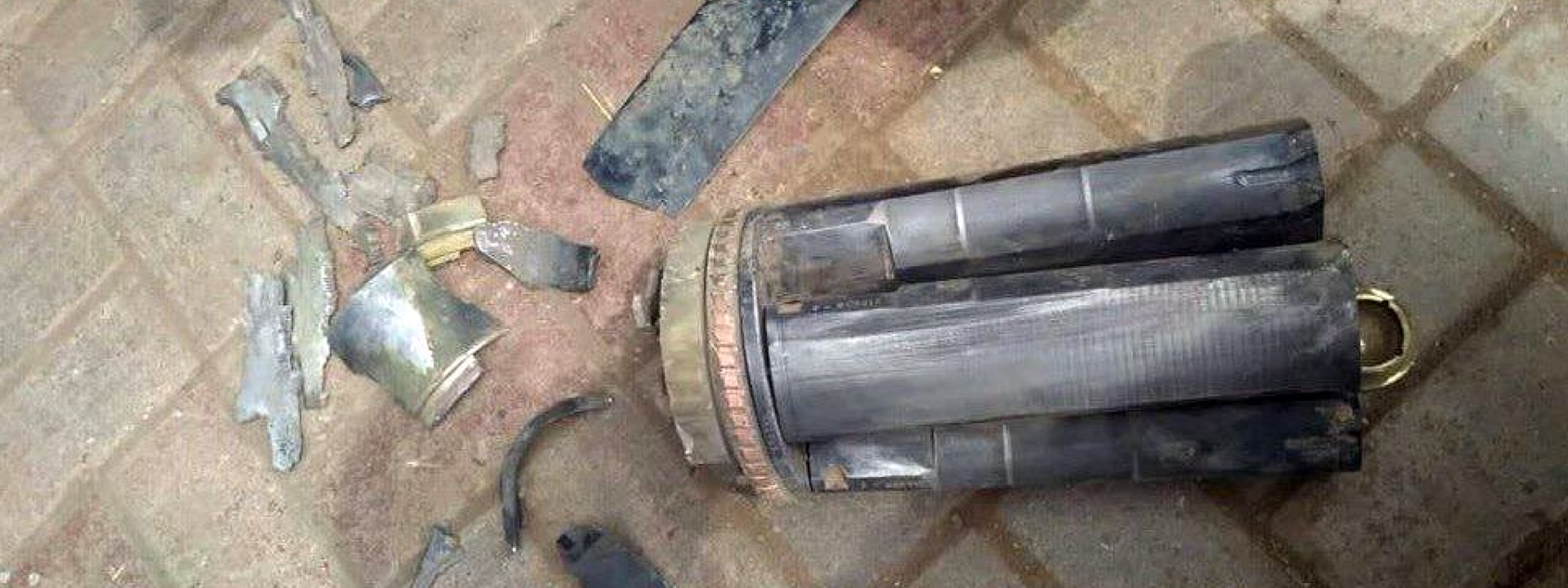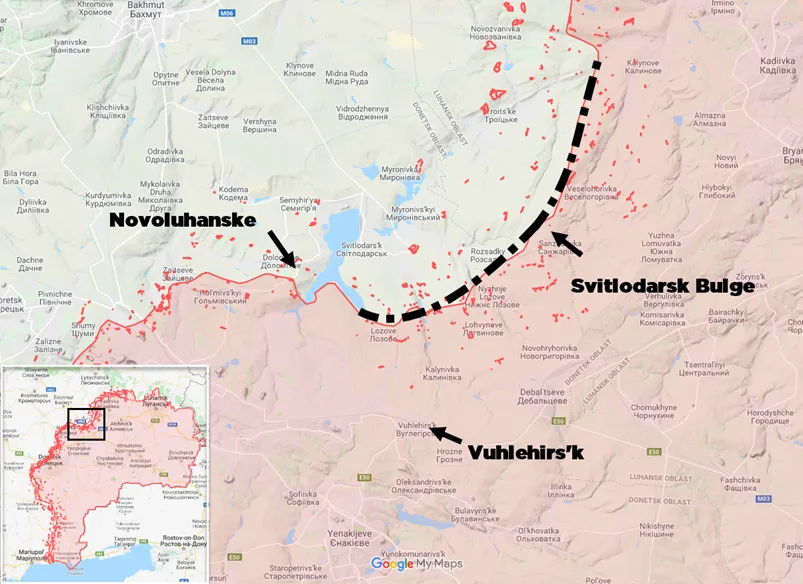The Use of Krasnopol Artillery Shells in Ukraine
Russian high-precision artillery rounds have seen limited use in Ukraine, to questionable effect
The Use of Krasnopol Artillery Shells in Ukraine

BANNER: (Source: Анатолий Штефан Штирлиц/archive)
Separatist forces in Ukraine have been using laser-guided artillery shells provided by the Russian military since spring 2018, but their effect has been questionable, open-source evidence suggests.
The use of the 2K25 Krasnopol artillery shell constitutes the most recent form of lethal aid provided by Russia to separatist forces in eastern Ukraine, though Russia has used it in other conflicts that predate the ongoing one in Ukraine.
Rumors and unverified claims of the Russian 152mm Krasnopol artillery shell’s use against Ukrainian forces have circulated since the outset of the war in the Donbas region, and it was not until 2018 that media reports began to corroborate some of those claims.
Being laser-guided, the Krasnopol would hypothetically be significantly more accurate than the more commonly used “dumb” shells, which rely solely on calculations of their ballistic trajectory. The reason for its seemingly late entrance into the conflict which began in 2014 is not clear, nor are the motivations for its recent use, but the evidence is overwhelming.
Recipients of the Shells
In May 2018, media reports citing Ukrainian military intelligence claimed that the armed forces of the Russian Federation delivered a shipment of Krasnopol artillery shells, along with the corresponding laser designator-rangefinders that guide the Krasnopol rounds, to an independent artillery brigade in Russian-backed separatist-controlled Donetsk. Seeing as there is just one such brigade in the armed forces of the so-called “Donetsk People’s Republic” (DNR), this narrows down the units to which these deliveries could have been made.
The brigade, known as the Guards’ Artillery Brigade ‘Kalmius’ (military unit 08802), is well-equipped to field the Krasnopol, as the unit fields several sorts of 152mm artillery equipment capable of firing this round. In addition to a handful of MSTA-S and 2s1 type self-propelled artillery pieces captured from the Ukrainian Armed Forces, Kalmius is better known for fielding several Russian-supplied MSTA-B towed artillery pieces. The MSTA-B is allegedly also used with the Krasnopol by Russian forces in Syria to conduct high-precision artillery strikes.
First Evidence of Use in Ukraine
Shortly after the May 2018 media reports, the first physical evidence of the Krasnopol’s use in Ukraine emerged. On June 23, imagery emerged of fragments from the rear wing section from a Krasnopol round that had allegedly struck a Ukrainian position that was vacated at the time of the strike.
While it was impossible to link the fragments directly to any one location, the fact that the Ukrainian armed forces were able to produce original photographs of them suggested that the round likely had impacted in Ukrainian government-held territory after being fired from Russian-backed separatist territory.

Comments from online users pointed out a high degree of similarity between the Krasnopol and the Ukrainian domestically produced Kvitnyk (flower) shell. Indeed, the Kvitnyk would have been nearly indistinguishable from the Krasnopol had it not been for the triangular factory markings that are characteristic of the Krasnopol, which the Kvitnyk lacks.

Shouldn’t the white boxes in the left-hand shot be moved down slightly to show the white markings? [BN1]
You can’t see it when the image is this small, but when you blow it up you can see that there is a marking inside the white box. [MS2]
More recently, on February 14, 2019, the Joint Forces Operation (JFO) released a statement on Facebook concerning the alleged employment of the Krasnopol that day. According to the statement, a civilian household was struck by the artillery shell, injuring an inhabitant. In the accompanying imagery, the house appeared to have sustained significant damage.

According to the statement, Russian-backed separatists fired the round from nearby Vuhlehirsk into the front-line town of Novoluhanske in Donetsk Oblast. These towns are part of an area vaguely referred to as the “Svitlodarsk bulge,” which has been subject to some of the most consistent fighting in the past years.
Fragments from the Krasnopol impact were nearly identical to those from a Kvitnyk, except — again — the triangular factory markings clearly visible on the main fins.

Beyond the immediate and obvious breach of the ceasefire, the employment of these projectiles would also have comprised a more basic violation of the Minsk agreements, which stipulate that heavy weapons above 100mm in caliber must be kept 50 kilometers from the frontlines. While it was not possible to determine whether the rounds were actually fired from Vuhlehirsk, the Tula Instument Design Bureau, which designed the Krasnopol, lists it as having a maximum range of 20 kilometers.
On April 9, the JFO released further evidence on Facebook of Krasnopol rounds being used against Ukrainian forces, although the DFRLab was unable to corroborate the claims conclusively with the imagery produced. The post did not go into any detail of the location where these rounds landed but claimed that it took place on April 5.
Conclusion
The employment of the 2k25 Krasnopol laser-guided artillery system in eastern Ukraine is one of several examples of uniquely Russian military technology ending up in the hands of Russian-backed separatists. The DFRLab previously reported on a large ammunition depot on the Ukrainian border known to supply Russian-backed separatist forces. This depot likely served as a holding point for the initial shipment and likely holds stockpiles for future shipments of these or other munitions.
Although the Krasnopol shipments are significant due to being advanced technology, their employment so far has been limited, with only two documented uses over the past year. Meanwhile, ceasefire violations carried out with Russian-supplied weapons take place on a daily basis in Ukraine.
Furthermore, the fact that a high-precision weapon failed to achieve its supposed purpose of harming Ukrainian servicemen suggests that it is either ineffective or was employed haphazardly. The Krasnopol has been used to good effect in Syria but may suffer in an environment like eastern Ukraine, where reconnaissance is significantly more limited and targeting support from airpower nonexistent.
Follow the latest Minsk II Violations via the @DFRLab’s #MinskMonitor.
For more in-depth analysis from our regional experts follow the AtlanticCouncil’s Dinu Patriciu Eurasia Center. Or subscribe to UkraineAlert.
Register for the DFRLab’s upcoming 360/OS summit, to be held in London on June 20–21. Join us for two days of interactive sessions and join a growing network of #DigitalSherlocks fighting for facts worldwide!

